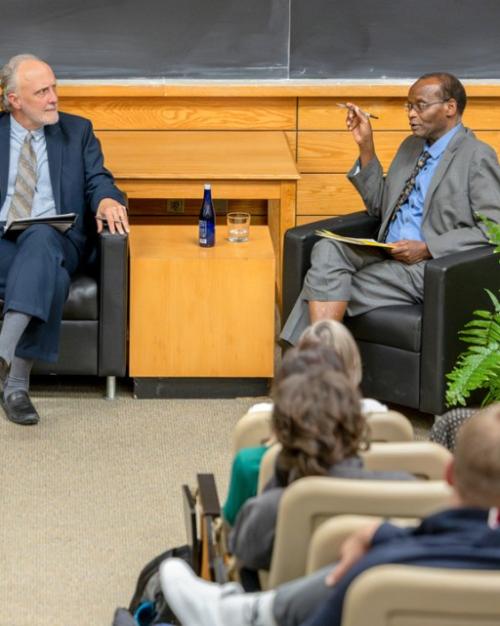In testimony before the House Subcommittee on Commerce, Justice, Science and Related Agencies March 3, Jonathan Lunine, the David Duncan Professor in the Physical Sciences, discussed the rationale for scientific, seafaring journeys to Jupiter’s moon Europa, and to Saturn’s moons Enceladus and Titan – trips that may take place in the 2020s.
Lunine, who directs the Cornell Center for Astrophysics and Planetary Science, painted a scientific and poetic portrait of the icy, ocean world Enceladus. “Enceladus has not surprised scientists – it completely shocked us,” he said. “Thanks to the prodigious capabilities of its chemical sniffers, [the Cassini mission] has found organic molecules, frozen drops of salty water and tiny grains of silica – all indicators that inside Enceladus is a hydrothermal system in which water, organics and minerals are heated together in the kind of chemical stew from which life on Earth might have begun four billion years ago.”
Enceladus provides a straightforward way to look for cosmic life, Lunine said, noting that to sample the plume of subsurface ocean spray emerging from the surface of the Saturnian moon is to sample its ocean, and this can be done for well below the cost of a flagship mission with instruments available for flight today.
Lunine said spacecraft could land on Titan’s hydrocarbon seas, and a mission there would be a good test for the universality of life in the cosmos. “Exploration of [Titan’s] seas is best done by landing capsule, which could float across the surface,” he said. “It would be the first maritime exploration of an alien sea, and [an] extraordinary adventure in and of itself.”
Discovering life within the ocean worlds of our own solar system may provide unexpected and hard-to-predict practical benefits, something the late Cornell astronomy professor Carl Sagan pointed out decades ago, Lunine testified. “If life can begin two or three or four times in our own solar system, the number of planets in the [Milky Way] galaxy as a whole harboring life must be enormously great. And how could we then resist taking the leap beyond our solar system to explore the vast spaces between the stars for life there?”
Joining Lunine was Charles Elachi, director of the Jet Propulsion Laboratory, who focused on Europa. In addition they covered a wide array of topics, including how proposed missions could land on these bodies, mission time frames, keeping solar system bodies free from Earth’s microorganisms, and the chirality (“righthandedness” or “lefthandedness”) of surface molecules and ions.
This article was originally published in the Cornell Chronicle.




